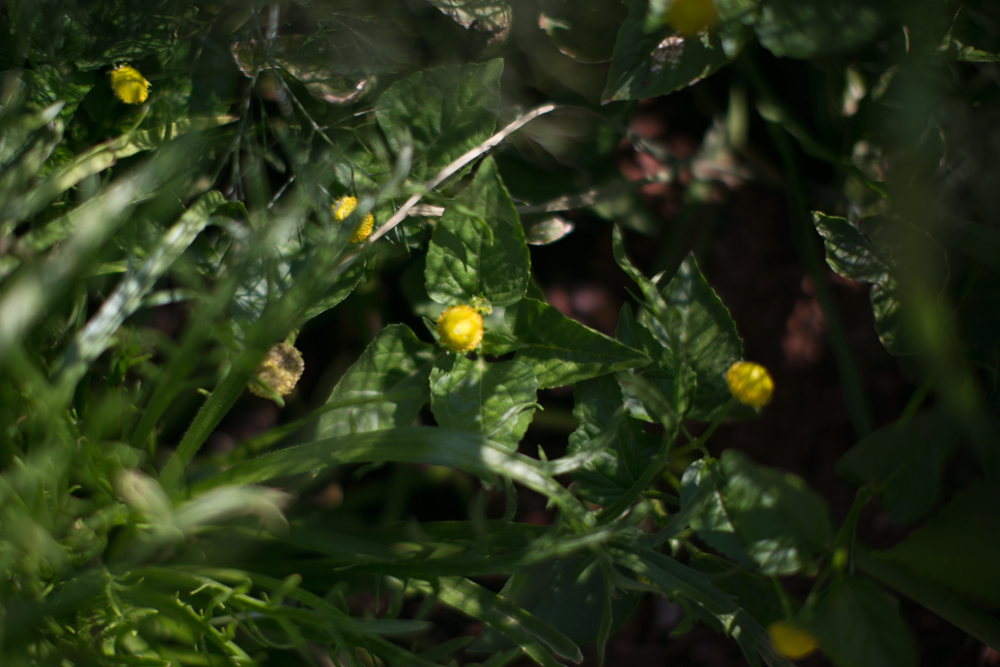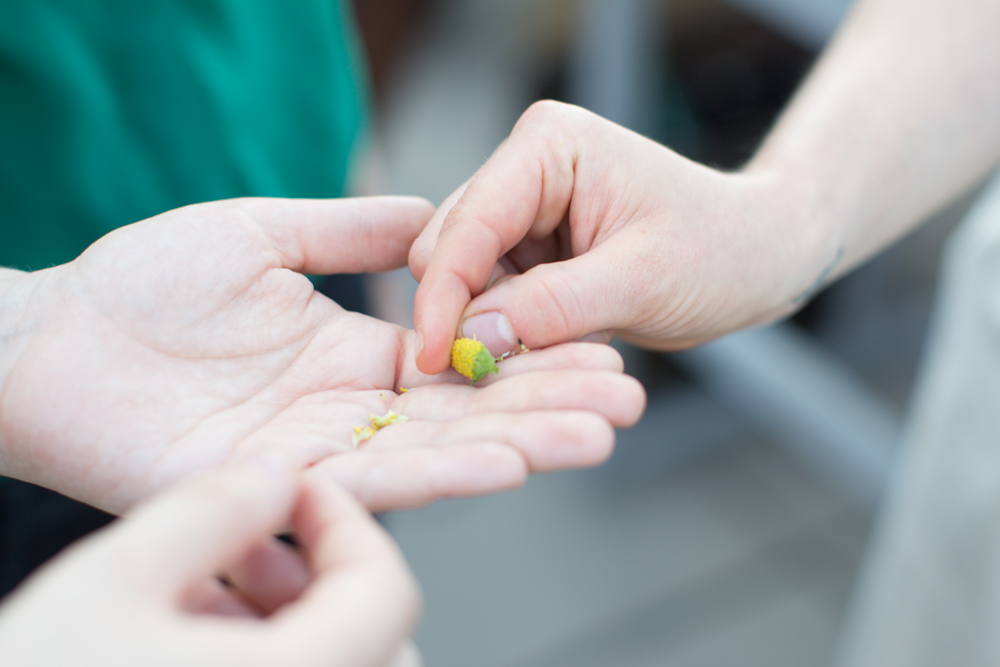“The Toothache Flower” – MoMA PS1 Salad Garden
The most popular thing growing in the MoMA PS1 Salad Garden is the compact little bud, bright yellow and innocent looking enough, that is called “Spilanthes,” or, “The Toothache plant.” This flowering plant has become my cheap trick, something I keep in my back pocket to lure apathetic visitors in to the pleasures of perils of the garden.
I first learned about this plant in Providence, Rhode Island, where friends were serving them alongside cocktails. I was instructed to take the tiniest nibble of the petals, and to wait for the Willy Wonka ride to begin. The sensation begins with a mild mouth tingle, which progresses to a numbing of the tongue, a vague stinging, followed by a jolt to the salivary glands. The final note is of citrus, as those fleshy pockets alongside your jaw contract, just enough to make you smack your tongue against the roof of your mouth. At this point, people are either titillated, or slightly miffed, wondering when this mouth sensation will end.
Spilanthes are more than just a flashy practical joke, they actually have antibacterial and antimicrobial properties. That tingling sensation that you feel is a sign that the herb is stimulating an immune reaction. Toothache plants contains spilanthol which acts as an anesthetic/analgesic, and to that end, this plant has long been used in India for the treatment of gum and dental problems. The numbing is very temporary, so you would have to chew a lot of the plant to get any sustained relief… The flowers are the strongest part of the plant, but the entire plant (root, stem, leaf and flower) is medicinal. The dried plant, especially the dried flower buds retain their “zing” for up to a year after harvest. I highly recommend growing these!


